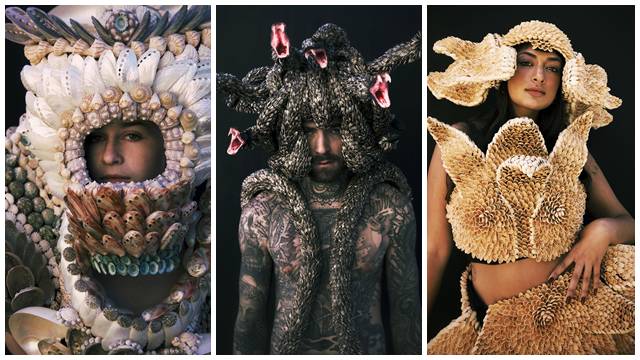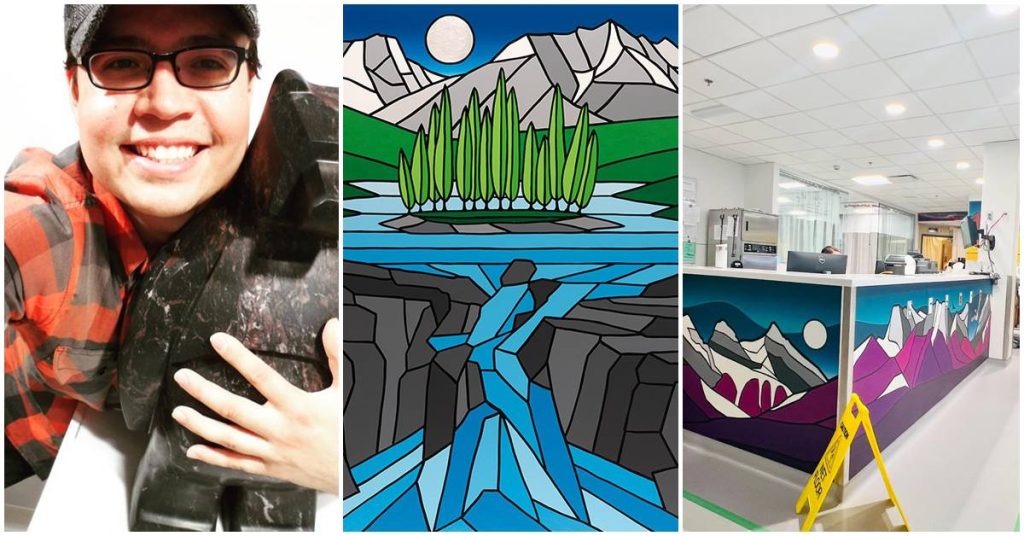You see a face. Step closer, and you see thousands of bottle caps, each one chosen, flattened, and layered to catch light like scales. That’s the signature of Jeffrey A. Meszaros (JAM Bottle Cap Art) an artist who transforms single-use waste into museum-worthy mosaics that speak to memory, music, and material truth.
Meet the Artist: From Bartender to Bottle Cap Mosaicist
The story starts behind a bar in Edmonton in 2008, where Jeff opened bottles and noticed the color, typography, and sheer variety of caps he threw away shift after shift. He saved them—10,000 to 20,000 over time—before he knew what they’d become. In 2014, after six years of trial-and-error on a John Lennon portrait, JAM Bottle Cap Art was born. Since then, he has completed 150+ mosaics, diverted 350,000+ caps from landfill, and placed works across North America, Europe, the UK, and Africa. Today, he creates full-time and keeps roughly 500,000 caps on hand to nail the exact shade he wants in a portrait.
Why Bottle Caps? The Medium Is the Message
Jeff uses caps because they’re abundant, durable, color-rich, and overlooked—perfect for rethinking value in a throwaway culture. He flattens and layers caps, folds edges for sharp lines, and nails them to wood backers to build depth, light, and texture. From a distance, you see realism; up close, you find “easter eggs” and micro-stories embedded in the caps themselves. The choice of plastic and metal waste isn’t a gimmick—it’s the subject, the paint, and the point.
Art First, Environment Always
You care about craft. Jeff does too. His portraits of icons—Jerry Garcia, John Lennon, Anthony Bourdain, Michael Jordan, Dolly Parton, and more—work as art even before you register the materials. The environmental message supports the image rather than competing with it: the realism pulls you in; the caps hold you there and shift your view of waste. Every piece is both portrait and proof—proof that single-use items can carry long-term meaning when handled with intention.
Pointillism, Mosaics, and a Contemporary Twist
Do these works sit in dialogue with pointillism or mosaics? Yes—more with mosaics, and with a modern, industrial palette. Like pointillists, Jeff builds images from discrete units; like mosaicists, he assembles a surface from modular pieces to create form, light, and shadow. The innovation is material: logoed, color-varied caps act like pre-tinted tesserae, and mechanical flattening plus nail-gun assembly introduce relief and shimmer that traditional flat media can’t match.
Activism, Documentation, or Community? All Three
-
Activism: Diverting hundreds of thousands of caps from landfill reframes “trash” as culture and challenges consumption.
-
Documentation: Each cap is time-stamped design history—brands, colors, local sourcing, even bar culture become part of the record.
-
Community: Bartenders, collectors, breweries, and fans contribute caps; clients commission icons they love; public installs invite shared viewing.
The work lives at the intersection of these forces—personal devotion, public conversation, and material responsibility.
Inside the Studio: Technique, Scale, and Detail
Jeff’s process is highly tactile and methodical. He sketches, traces, and blocks compositions on plywood, then sorts thousands of caps to map values and hue shifts. He flattens, folds, and layers caps like scales, then fastens them with nails to control surface topography and light behavior. Typical 4ft×4ft pieces use 3,500–5,000 caps, while large works reach arena scale—like a 9ft×7ft diptych for the KFC Yum! Center. A 5ft×5ft Jerry Garcia portrait used 7,000+ caps and includes witty micro-edits, like a white-out tweak to a red-hand icon as an homage to Garcia’s handprint.
Subjects With Depth: How Research Shapes Portraits
Jeff immerses himself in each subject—listening to audiobooks, interviews, and discographies while he builds. That research influences pose, palette, and the placement of “easter eggs” you only notice up close. The result feels lived-in and specific; fans recognize nuance, and newcomers discover character through material choices.
Beyond Caps: Corks, Paper, and Living History
JAM’s practice expands into cork mosaics and archival paper collage, including a portrait of Abraham Lincoln composed entirely from damaged Civil War–era newspapers—history literally woven into image. That Lincoln piece went to auction in Chicago in April 2024, marking a milestone in Jeff’s dialogue between material culture and portraiture.
Commissions and Collaborations
Jeff partners with interior designers, creative directors, and brands—including the Chicago Bulls, Deep Eddy Vodka, and Labatt—on large-scale installations and bespoke works. He also engages fans through social reels, giveaways, prints, and process breakdowns, keeping the practice open and accessible.
Why This Work Matters to You
-
You want art that looks incredible and stands for something real. Jeff delivers both—no fluff, no gimmicks.
-
You value community. These pieces grow from shared effort—bars, collectors, clients, and viewers all contribute.
-
You care about impact. Every portrait diverts waste and models a repeatable, creative solution you can apply in your world.
How to Get Involved
-
Commission a portrait or site-specific installation that fits your space and story.
-
Contribute caps through community drives and follow builds through Instagram reels and updates.
-
Explore prints and new series to bring JAM’s material storytelling into your home or office.
You’ll see the subject first. Then you’ll see the caps. Then you’ll see yourself—what you keep, what you toss, and what you choose to make of it next.
Jeffrey A. Meszaros | JAM Bottle Cap Art

Hello art lovers. My name is Deepak Mehla, and I’m from Karnal, India. I enjoy reading stories about people’s struggles and how they overcome them. These motivational stories work like a source of energy for me.
Although Arttellers is completely different from my original vision, I, too, am going through a challenging phase in life. To keep myself busy and to hold on to hope, I share stories of artists with all of you. I believe these stories will give you a new direction, just as they inspire me.
Arttellers exists because I want to share how some people turn the work they love into their livelihood, and how choosing their passion leads them to success. I started Arttellers to keep my own hope alive and to help you discover people whose journeys might inspire you too.


